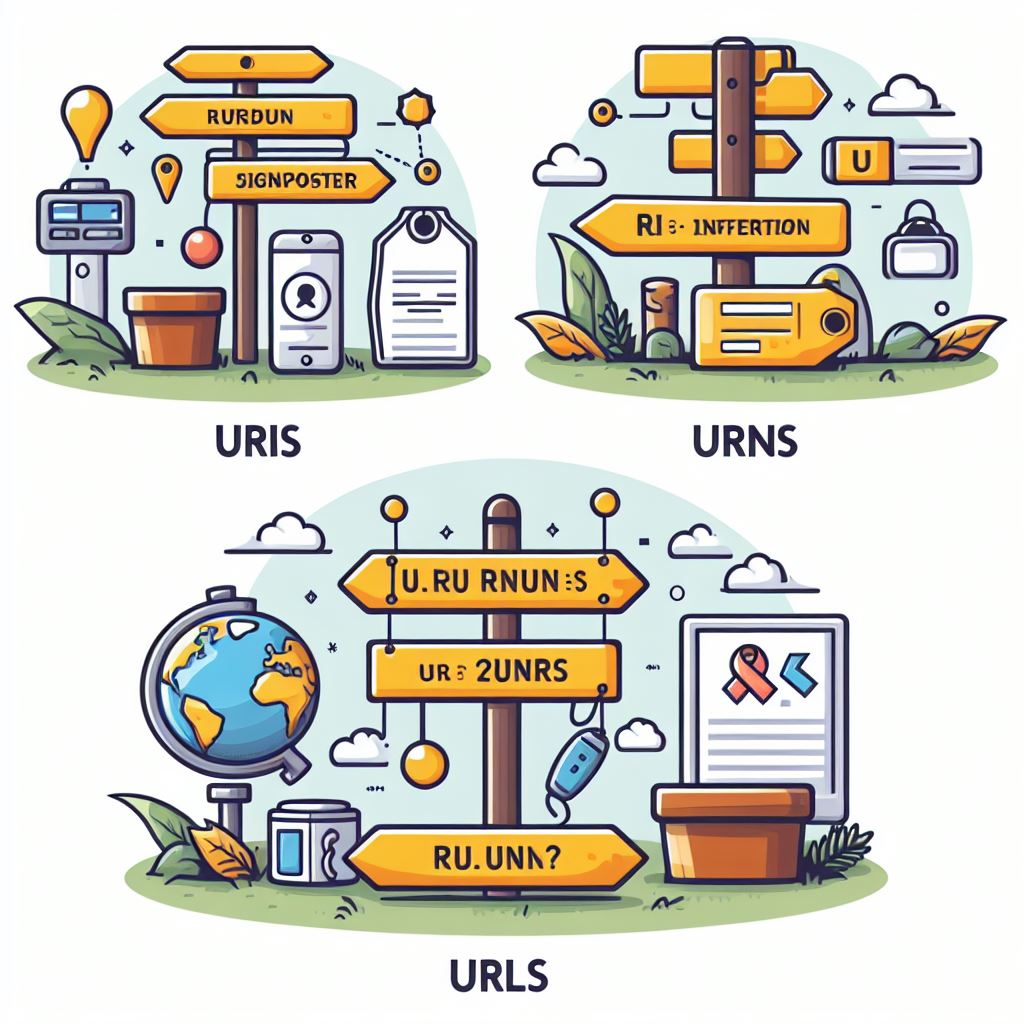In the vast landscape of the internet, we often come across terms like URI, URN, and URL. While they may seem like jargon at first, understanding these concepts is crucial for anyone navigating the digital realm. In this article, we’ll break down these terms in simple language, exploring what sets URI, URN, and URL apart and how they play distinct roles in the world of web communication.
URI (Uniform Resource Identifier):
Let’s start with the basics: URI stands for Uniform Resource Identifier. At its core, a URI is a string of characters that provides a unique way to identify and locate a resource on the internet. Think of it as an address for anything that can be identified or accessed, such as a web page, an image, or even a document.
URI serves as a generic term encompassing two more specific types: URN (Uniform Resource Name) and URL (Uniform Resource Locator).
URN (Uniform Resource Name)
A URN is a subset of URI, and its primary purpose is to provide a unique and permanent name for a resource. Unlike a URL, which we’ll discuss shortly, a URN doesn’t necessarily provide information on how to access the resource. Instead, it serves as a persistent label, much like an ISBN for books or a DOI for scholarly articles.
One key characteristic of URNs is their longevity. The idea is that even if the resource is moved to a different location or changes its access method, the URN remains the same. This stability is essential for referencing resources in a consistent and reliable manner.
A URN looks like this:
- urn:isbn:0-123-45678-9 (identifying a book with the given ISBN number)
- urn:ietf:rfc:3986 (identifying an RFC document with the specified number)
URL (Uniform Resource Locator)
Now, let’s delve into the more familiar term – URL, which stands for Uniform Resource Locator. Unlike URN, a URL not only identifies a resource but also provides information on how to access it. Essentially, a URL serves as the web address that directs your browser to the specific location of the resource.
Here’s what makes up a URL:
- Scheme: This tells your computer how to access the resource, like HTTP or HTTPS.
- Host: This is the domain name or IP address of the server where the resource is located.
- Port: (Optional) It’s like a specific door on that server. If no door is mentioned, it uses the standard one.
- Path: (Optional) It’s the specific location or directory on the server where the resource is found.
- Query Parameters: (Optional) These are extra instructions, often used in dynamic websites.
- Fragment Identifier: (Optional) It points to a specific section or anchor within a webpage.
To illustrate, consider the URL https://www.example.com/article/page1. Here, “https” is the scheme, www.example.com is the domain name, and “/article/page1” is the path leading to the desired web page.
Distinguishing Characteristics:
Now that we have a basic understanding of URI, URN, and URL, let’s highlight their key differences:
- Purpose:
- URI: General term for identifying resources on the internet.
- URN: Provides a unique and permanent name for a resource.
- URL: Specifies both the resource’s location and how to access it.
- Access Information:
- URI: May or may not provide information on how to access the resource.
- URN: Does not inherently provide access information.
- URL: Includes details on how to access the resource, serving as a web address.
- Stability:
- URI: Serves as a broad category encompassing both URN and URL.
- URN: Emphasizes stability and persistence, even if the resource’s location changes.
- URL: Focuses on specifying the resource’s current location and access method.
- Examples:
- URI: The overarching concept that includes both URN and URL.
- URN: Example could be an ISBN for a book or a DOI for an academic paper like urn:isbn:0-123-45678-9
- URL: Example includes web addresses like
https://www.example.com/page.
Conclusion
In conclusion, understanding the distinctions between URI, URN, and URL is crucial for anyone navigating the internet. While URI serves as a general term for resource identification, URN and URL provide more specific roles. URN offers a stable and persistent name for resources, emphasizing longevity and consistency. On the other hand, URL not only identifies resources but also provides the necessary information to access them, serving as the web address we commonly encounter.
In our daily online interactions, recognizing and utilizing these terms appropriately can enhance our ability to communicate effectively in the digital landscape. Whether you’re a casual internet user or involved in web development, having a clear understanding of URI, URN, and URL is a valuable asset in navigating the ever-expanding world of information on the web.
Thank you for reading.

